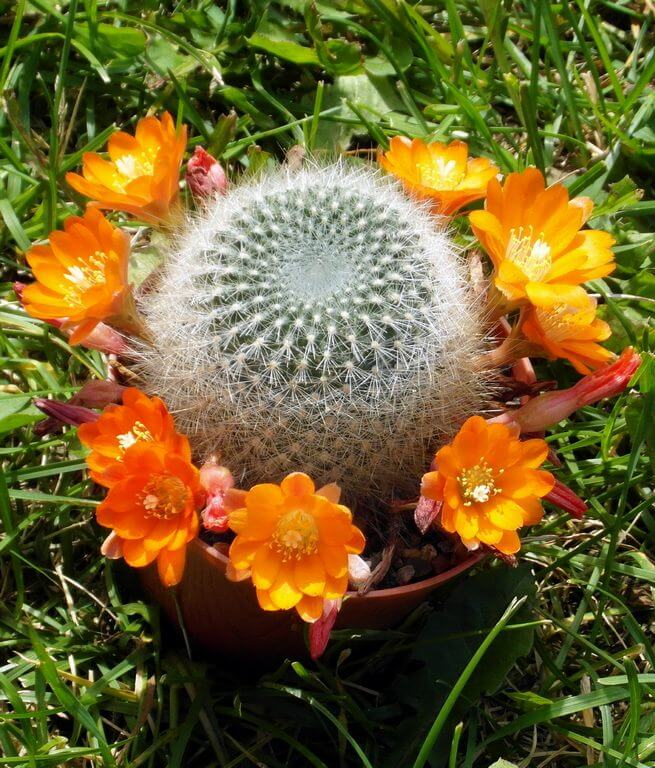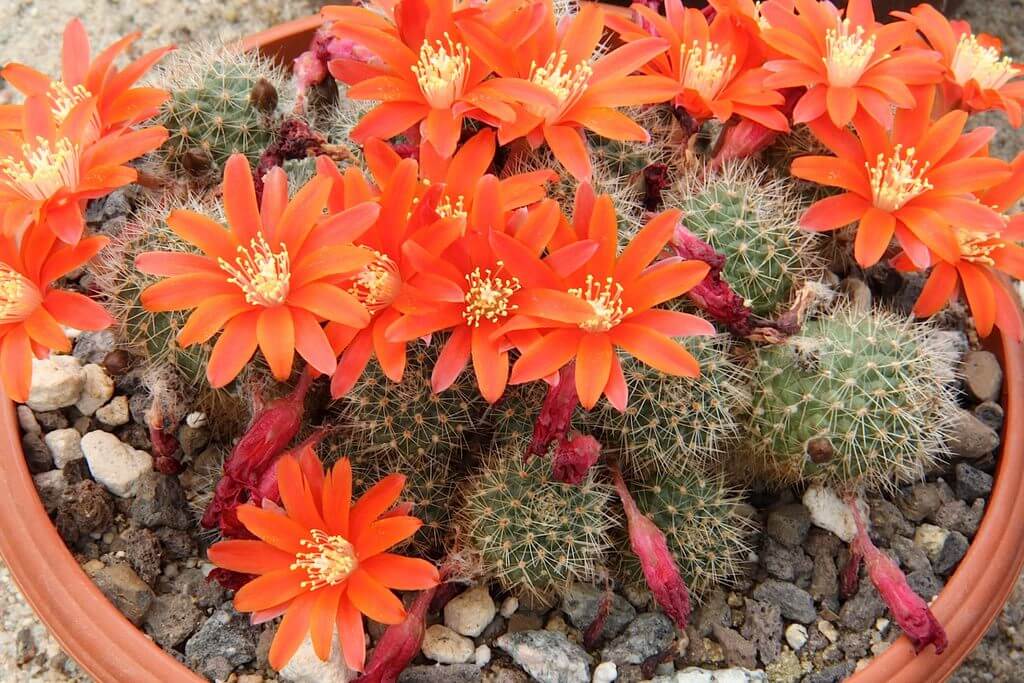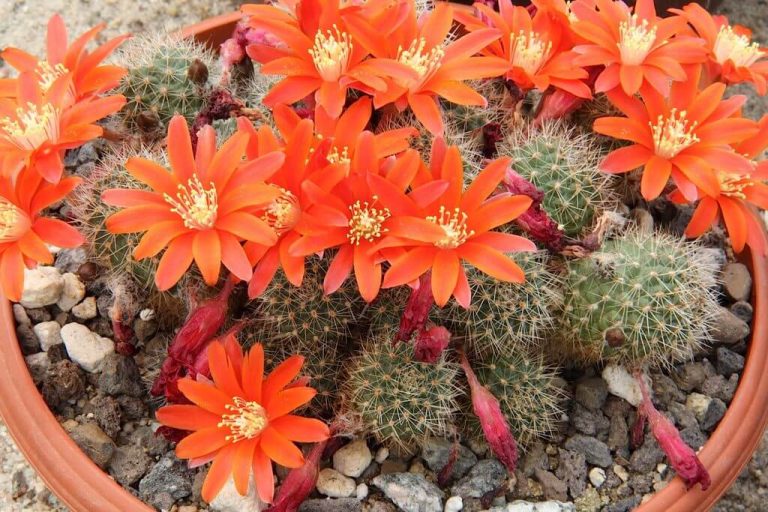Spiky Succulent Crown Cacti Rebutia are among the most popular and widely grown types of succulents due to their striking beauty and ability to thrive in various conditions.
One particular species, Rebutia, is especially beloved by gardeners and plant enthusiasts for its bright blooms and low-maintenance care requirements.
In this article, we’ll take an up-close look at what makes Crown Cactus Rebutia so special – from its unique characteristics to tips on how to give it the best possible care.
If you’re looking for a stunning addition to your indoor or outdoor space that won’t require too much effort, Crown Cactus Rebutia could be the right choice! Not only is this succulent easy to grow, but it also provides vibrant colors during the flowering season.
Let’s explore this fantastic specimen further and learn why it has become such a sought-after houseplant.
Finally, we will provide invaluable advice on ensuring that your Crown Cactus Rebutia remains healthy throughout the year. Everything you need to know about keeping this beautiful succulent alive, from proper watering techniques to essential nutrients for optimal growth, will be discussed here.
So let’s jump in and discover all there is to know about Crown Cactus Rebutia!
Overview Of Rebutia Cacti
The Rebutia cactus, native to the high plateaus of Bolivia and Argentina, is an easy-to-care-for succulent with stunning flowers. Take, for example, a small pink flower that blooms in early spring – its beauty and hardiness are unmatched. Rebutias require plenty of light and moderate water during the summer but should be kept dry during winter dormancy.
Rebutia cacti range from dwarf species only inches tall to larger shrubs over two feet in height. They have globose bodies covered by fine spines or matted wool that can vary widely among different cultivars.
The flowers may bloom once per year or several times throughout the growing season, depending on environmental conditions like temperature and moisture levels. This makes them perfect for both indoor and outdoor gardening projects!
Anatomy Of A Rebutia Cactus
Rebutia cacti are an exciting species of crown cactus with over 350 varieties. A unique feature of the Rebutia is that they have a central taproot and many lateral roots to absorb water — giving them excellent drought tolerance.
The anatomy of a Rebutia Cactus comprises two distinct parts: its stem and root system. The stem is covered in spines and can reach up to 4 inches tall, while the root system typically extends much deeper into the soil for stability and sustenance. These plants also produce flowers ranging from yellow to red, depending on their variety. These blooms last for about a week before wilting away.
Regarding care requirements, Rebutias need more attention than other types of cacti due to their smaller size but still require minimal maintenance overall. With proper watering, light exposure, temperature control, and fertilization, these hardy Crown Cacti will thrive indoors or outdoors!

Care And Maintenance Requirements
For the care and maintenance of rebutia cacti, there are a few key things to keep in mind.
First, these cacti need plenty of indirect sunlight and warmth to thrive. They also require regular watering during their growing season but should be allowed to dry out completely between watering cycles.
Additionally, they benefit from occasionally being fertilized with a balanced fertilizer made explicitly for cacti.
Finally, one must consider the potential dangers of pests or diseases affecting these plants. To prevent any significant damage from occurring, make sure your rebutia cactus has proper air circulation and inspect them regularly for signs of disease or infestation.
With careful attention and upkeep, you will enjoy the rewards of having a healthy crown cactus! Let’s Move on then to the benefits of growing Rebutia cacti.
Benefits Of Growing Rebutia Cacti
Growing cacti is a great way to bring life into your home. Who doesn’t love the sight of beautiful, spiky plants? But for Rebutia cactus, there’s more than just aesthetic pleasure—this plant has some real benefits!
Unlike many other succulents and houseplants, Rebutia cacti are low maintenance. They need sunshine, occasional watering in hot climates, and good drainage. Plus, these hardy plants can withstand cooler temperatures down to 10F (-12C). They’re also known for having thick stems that need little pruning or trimming.
What makes them even better is their ability to tolerate neglect. Even if you forget about them for weeks on end, your Rebutias will still thrive! This means you can enjoy all the beauty without worrying too much about upkeep. With so many advantages, it’s no wonder why this type of cactus is becoming increasingly popular among gardeners and green thumb enthusiasts alike.
Popular Varieties Of Rebutia Cacti
From the bright yellow flowers of Rebutia melonii to the vibrant red spines of Rebutia senilis, there are various beautiful and unique types of crown cacti. Each is an exciting addition to any garden or space and can provide years of beauty with proper care.
Popular varieties like Rebutia fraisei, Rebutia muscula, Rebutia gracilis, and more have distinct characteristics that make them stand out from other types of cacti. Depending on your needs, each type provides something different in terms of color, size, shape, texture, and growth rate. With such a wide selection available, it’s easy to find a species that will fit perfectly into your home or outdoor landscape.
Now that you know what varieties are available for Rebuita Cacti, it’s time to tackle some common issues associated with growing these plants.

Troubleshooting Common Issues With Rebutia Cacti
Ah, Rebutia cacti. The crown of the desert plants that we love to show off in our homes with their bright colors and unique shapes. But like any other plant, they can have their fair share of problems! Here are some tips on troubleshooting common issues with rebutia cacti, from pests to disease.
First up is pests! Some of these buggers may seem harmless at first sight but don’t be fooled – mealybugs and scale insects can wreak havoc if left untreated. To prevent infestations:
- Keep your plants away from damp areas and check them regularly for signs of pest activity.
- Treat immediately if you find any pest using a pesticide or insecticidal soap solution.
- Remove dead leaves or stems where pests might hide and dust the soil surface, which helps reduce humidity levels.
The next issue could be due to too much water or insufficient nutrients – both of which can impact your cactus’s growth rate and health. Ensure you’re watering only when necessary (soil should feel dry before each watering), and add fertilizer every few weeks during the growing season for best results.
Finally, consider repotting your cactus if it’s become root-bound; this will give it more room to breathe and help promote healthier growth overall.
So there you have it: three easy steps towards keeping your Rebutia healthy and happy!
Conclusion
The Rebutia cacti family is a beautiful addition to any garden or home. With their bright blooms and unique shapes, these cacti will make a statement in your space. They require minimal care but offer big rewards with proper maintenance and attention. Whether you choose the popular varieties of Rebutia or go for something more exotic, they will help bring life to your decor.
Despite their hardy nature, issues can arise when caring for your Rebutia cactus. Keeping an eye out for pests, providing adequate light and water levels, and properly preparing the soil before planting should help prevent most problems from occurring. However, if you face any troubleshooting scenarios, it’s essential to research to know how best to handle the situation.
Rebutia cacti are an excellent choice for anyone looking to add flair to their indoor or outdoor spaces. Not only are they visually striking, but with just a little knowledge about their needs, you’ll have beautiful specimens thriving in no time!
